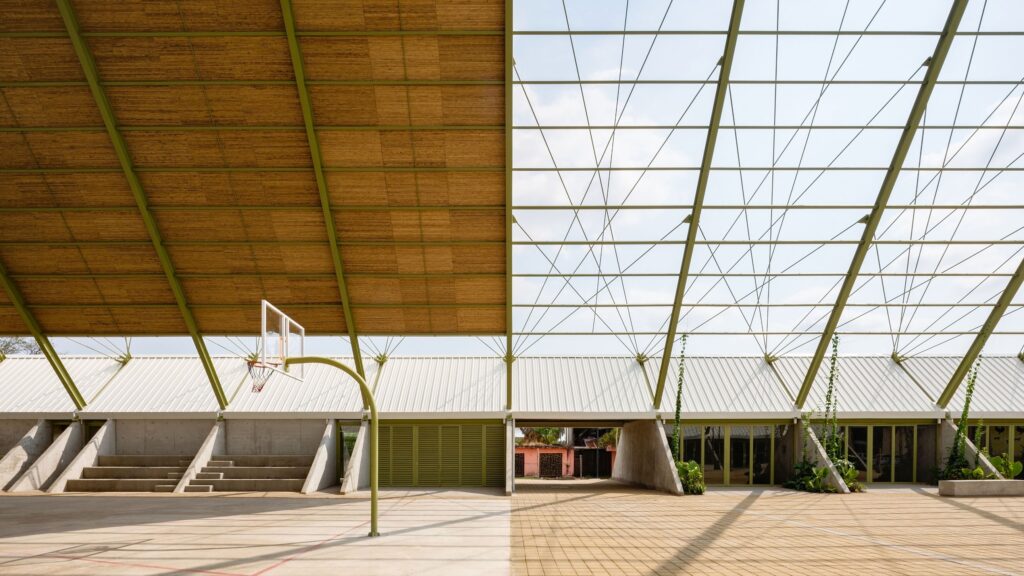In 2005, Hurricane Stan rendered the main train station in Tapachula, Mexico, in the coastal state of Chiapas, unusable. For more than a decade, the government did nothing. Then, in 2018, Mexico elected a president, Andrés Manuel López Obrador, who was determined to revitalize impoverished neighborhoods with new construction, a job he entrusted to his Secretariat of Agrarian, Territorial, and Urban Development (SEDATU), led by a then 35-year-old powerhouse named Román Meyer Falcón.
Not long after, a group of civic-minded architects joined the cause. When the National Autonomous University of Mexico (UNAM) announced a competition, organized at SEDATU’s behest, to design amenities like a new market for the city of Matamoros, UNAM academics Gabriela Carrillo, José Amozurrutia and Eric Valdez, along with Carlos Facio and Israel Espín, all teamed up. (Facio is Carrillo’s husband and Amozurrutia’s partner; Espín had previously worked with Carrillo.) Forming a group called Colectivo C733, the five worked day and night, coming up with a winning scheme in just two weeks. The building, opened in 2020, was an instant landmark, thanks in part to a grid of two-story-high brick chimneys that let daylight in and hot air out while forming a dramatic roofline.
It was not just a new beginning for Matamoros; it was also a new beginning for the architects of C733. Designing together while also working apart, they learned to compress a process that might previously have taken years into just a few months, often making impromptu decisions on-site. “In some countries, you can’t make changes after construction begins, but in Mexico you can,” Carrillo notes. Soon, having proved itself, C733 began receiving commissions directly from SEDATU. They included turning that old Tapachula train station into a 77,000-square-foot sports and cultural center, with a soaring, translucent roof that distinguishes it from everything around it. Another project was to create an eco park in Bacalar, near the Belize border. C733 superimposed a boardwalk in the form of a very large square over a delicate lagoon and reef. The structure keeps visitors on a prescribed path while serving as a powerful sculptural element, almost like an earthwork. To Facio it is proof that “good architecture does not need a building.”
Most of their projects, though, are buildings, typically supported by beams that angle upward into giant X’s. “We’re known as these people,” Carrillo says, crisscrossing her fingers to depict the simple structural scheme. In fact, peaked roofs provide all kinds of practical benefits while giving the new public facilities a hint of monumentality. “If we’re repeating ourselves, it’s for all kinds of good reasons,” she says. Sticking with peaked roofs not only gives each new project a head start, it has also given C733 a kind of signature.
Altogether, the collective has completed 35 sports and education facilities, markets, community centers, and cultural buildings since 2019. Incredibly, SEDATU and Meyer Falcón (who is expected to leave office this year, after the next president is elected) have completed 1,000 projects by nearly 100 firms. “We’re amazed by some of the other designs,” says Facio, giving, as an example, a monument by the firm Estudio MMX in Nayarit. As for SEDATU’s methods of cutting red tape, Facio says, “It’s like fresh air.” Meyer Falcón returns the compliment. C733, he says, “are innovative, creative, and spirited architects and at the same time they connect with the communities we work for.”

